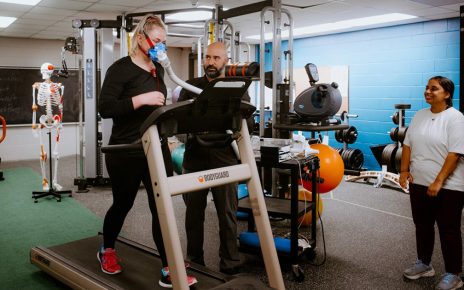Mental health and physical fitness are deeply interconnected, influencing each other in profound ways. Engaging in regular physical activity can significantly benefit mental health by reducing symptoms of anxiety, depression, and stress while enhancing mood, self-esteem, and overall cognitive function. Here’s a closer look at how fitness positively impacts mental well-being and why integrating both into daily life is crucial.
1. Physical Activity and Mental Health: The Science
Release of Endorphins
- The “Feel-Good” Hormones: Exercise triggers the release of endorphins, often referred to as the body’s natural mood lifters. These chemicals interact with receptors in the brain that reduce the perception of pain and promote feelings of euphoria and relaxation.
Improved Brain Function
- Neurogenesis: Regular physical activity can stimulate the growth of new brain cells (neurogenesis) in key areas like the hippocampus, which is critical for memory, learning, and emotional regulation.
- Increased Blood Flow: Exercise boosts blood flow to the brain, enhancing oxygen and nutrient delivery, which can improve cognitive functions and reduce the risk of cognitive decline with aging.
2. Benefits of Fitness for Mental Health
Reduces Symptoms of Depression and Anxiety
- Natural Antidepressant: Studies have shown that regular exercise can be as effective as antidepressant medication for some individuals, especially when combined with other treatments.
- Anxiety Relief: Physical activity, particularly aerobic exercises like jogging, swimming, or cycling, has been shown to reduce anxiety symptoms by releasing tension and promoting relaxation.
Enhances Mood and Emotional Well-Being
- Mood Stabilization: Engaging in regular physical activities can help stabilize mood fluctuations and manage stress, reducing the risk of emotional outbursts or prolonged sadness.
- Increased Self-Esteem: Regular exercise can improve body image and self-confidence, leading to a more positive self-perception and greater self-esteem.
3. Exercise as a Stress Reliever
Stress Reduction Mechanisms
- Cortisol Levels: Exercise reduces levels of the body’s stress hormones, such as adrenaline and cortisol, while stimulating the production of endorphins, which can help improve mood.
- Mindfulness and Focus: Physical activity can serve as a form of meditation, helping you to focus on your movements and environment, which can act as a mental distraction from stressors and anxiety.
Promotes Relaxation
- Improved Sleep Quality: Regular exercise can help you fall asleep faster and improve sleep quality, which is critical for mental health. Adequate sleep reduces stress, improves mood, and increases cognitive function.
4. Types of Exercise for Mental Health Benefits
Aerobic Exercises
- Running, Walking, Swimming: Activities that increase heart rate can effectively reduce anxiety and depression. Aerobic exercises are especially known for their immediate mood-boosting effects.
Strength Training
- Weight Lifting, Resistance Exercises: Strength training can enhance feelings of accomplishment, improve self-esteem, and promote a sense of personal empowerment and resilience.
Mind-Body Exercises
- Yoga, Tai Chi, Pilates: These forms of exercise emphasize controlled breathing, stretching, and relaxation techniques that promote mental calmness, reduce stress, and enhance mindfulness.
Team Sports and Group Activities
- Social Interaction: Participating in team sports or group fitness classes can foster social connections, reduce feelings of isolation, and enhance overall emotional well-being.
5. Tips for Integrating Fitness and Mental Health Practices
Set Realistic Goals
- Start Small: Begin with manageable activities that fit your lifestyle, such as walking for 10 minutes a day, and gradually increase the intensity and duration.
- Consistency is Key: Aim for regular exercise sessions, even if they are short. Consistent practice is more beneficial than sporadic, intense workouts.
Choose Activities You Enjoy
- Find What You Love: Engaging in activities you enjoy increases the likelihood of sticking with them, whether it’s dancing, hiking, cycling, or playing a sport.
Combine Exercise with Mindfulness Practices
- Mindful Movement: Incorporate mindfulness practices like yoga or meditation with regular physical activity to maximize benefits for both body and mind.
Listen to Your Body
- Rest When Needed: While exercise is beneficial, overtraining can lead to burnout and increased anxiety. Ensure you rest and recover properly.
6. Seeking Professional Support
Work with a Fitness Coach or Therapist
- Personalized Plans: A fitness coach or therapist can help design a tailored exercise plan that fits your mental and physical health needs.
- Mental Health Guidance: If you struggle with mental health issues, consider consulting a mental health professional who can integrate fitness into your treatment plan.
7. Conclusion
Combining mental health and fitness practices offers a holistic approach to overall well-being. Regular exercise can improve mood, reduce anxiety and depression, enhance cognitive function, and increase self-esteem. By prioritizing both physical and mental health, you can achieve a balanced, healthier lifestyle.




